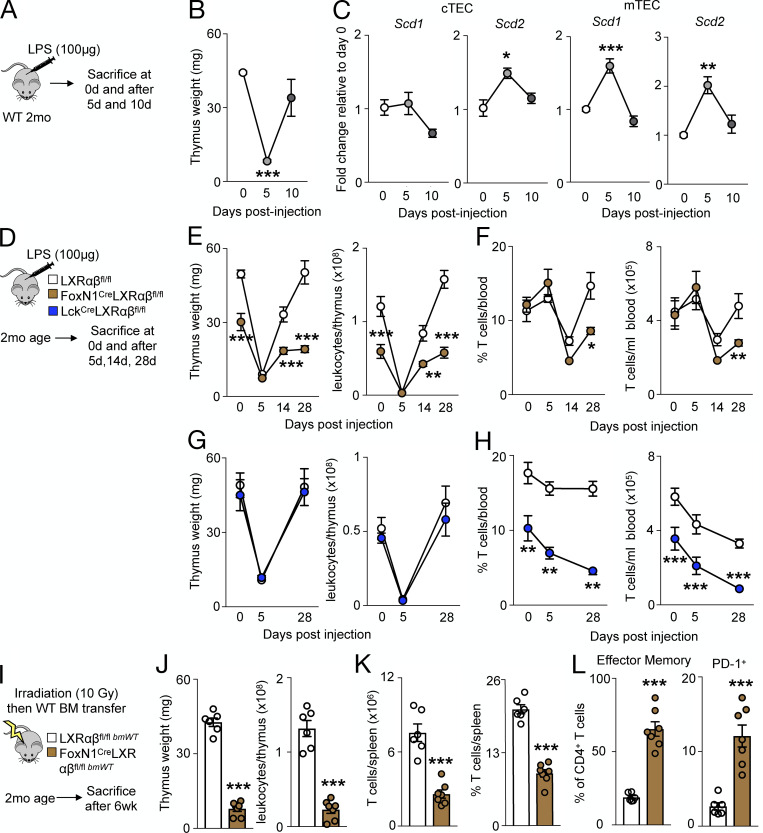Figure 6.
LXRαβ is required for efficient thymic recovery and reconstitution of the T cell pool. (A–C) 2-mo-old WT mice were injected with LPS (100 µg; A), and thymus weight over time after LPS injection (B) and Scd1 and Scd2 levels by real-time PCR from FACS-sorted WT cTECs and mTECs over time after LPS injection (C) are shown. (B and C) Data are n = 3 or 4 per group, representative of two independent experiments. *P < 0.05, **P < 0.01, ***P < 0.001. (D–F) 2-mo-old LXRαβfl/fl mice, Lck-LXRαβ−/− mice, and FoxN1-LXRαβ−/− mice were injected with LPS (100 µg) intraperitoneally and sacrificed 5, 14, or 28 d after injection, with thymus weight over time quantified (E) and circulating T cell frequency and number enumerated (F). (G and H) Thymus weight over time after LPS injection in LXRαβfl/fl versus Lck-LXRαβ−/− mice (G) and circulating T cell frequency and number enumerated (H). (D–H) Data are n = 4–7 per group from two independent experiments. *P < 0.05, **P < 0.01, ***P < 0.001. (I) Experimental approach of J–L: 2-mo-old LXRαβfl/fl and FoxN1-LXRαβ−/− mice were lethally irradiated and transplanted with WT BM. After 6 wk, mice were sacrificed. (J–L) Thymus weight and cellularity (J), frequency and enumeration of splenic T cells (K), and frequency of effector memory and immunoinhibitory splenic CD4+ T cells (L). (I–L) Data are n = 6–8 per group from two independent experiments. ***P < 0.001, by Student’s t test or two-way ANOVA followed by Bonferroni’s post-test. All data are mean ± SEM.

